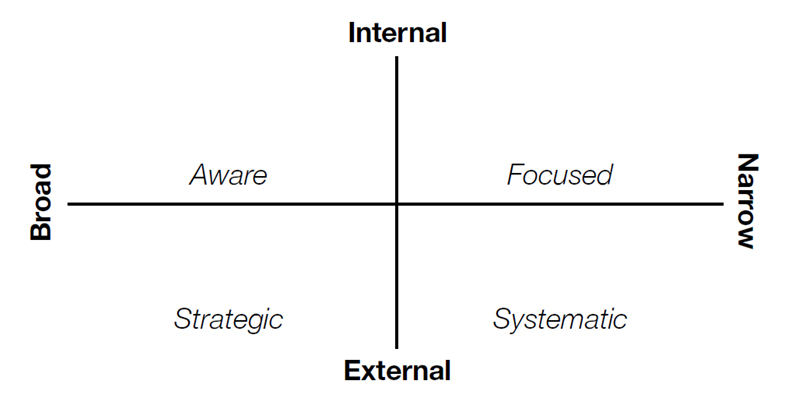There are many distractions in a pharmacy, especially for the pharmacist. These can range from physical factors to interruptions and the need to split your attention between the task in hand and a requirement to supervise activity both in the dispensary and at the pharmacy counter.
A model that will help you to think about concentration and how you can get distracted comes from the field of sports psychology. Nideffer's concentration model (see below) describes focus along two axes, giving a four-quadrant model. The axes are internal or external focus and wide or narrow focus.
The four-quadrant model: concentration styles
A good way to illustrate this is to think about receiving a telephone call when you are driving. While you are driving, you need a wide focus that is external. When the phone rings, your focus becomes narrow.
But if someone then gives you some news that is very important to you, your focus will become internal rather than external. You have moved from an external wide focus to an internal narrow focus. Even after you have finished the call, your focus might remain at internal and wide, as you are thinking about all the consequences of the news you have been told.
In the context of accuracy checking, a narrow external focus is needed. If you are trying to keep an eye on what is happening on the pharmacy counter, your focus will be wide and external. If you spot a clinical issue on a prescription, your focus might change to narrow and internal. If you become distracted because it is nearing lunchtime, your focus might become wide and internal.
There are many physical factors that can lead to distractions. Feeling hot or cold, hearing noise or music, and light levels can all act as distractions.
Error recording
Review your error recording system. Ensure that all staff understand:
- The errors and near misses that should be recorded
- The data to record
- How and when to review recorded errors.
Errors and near misses
Analyse the dispensing errors and near misses that have occurred in your pharmacy in past 12 months. What errors resulted from slips, lapses, rule-based or knowledgebased errors?
- Analyse the errors for patterns such as the time of day, person involved, product involved or other factor.
- Arrange a meeting with your dispensing team to discuss.
References and further reading
- General Pharmaceutical Council, Regulate, Issue 3, February 2012. Available here
The next step is to put these ideas into action. Finish by recording your learning outcomes.

